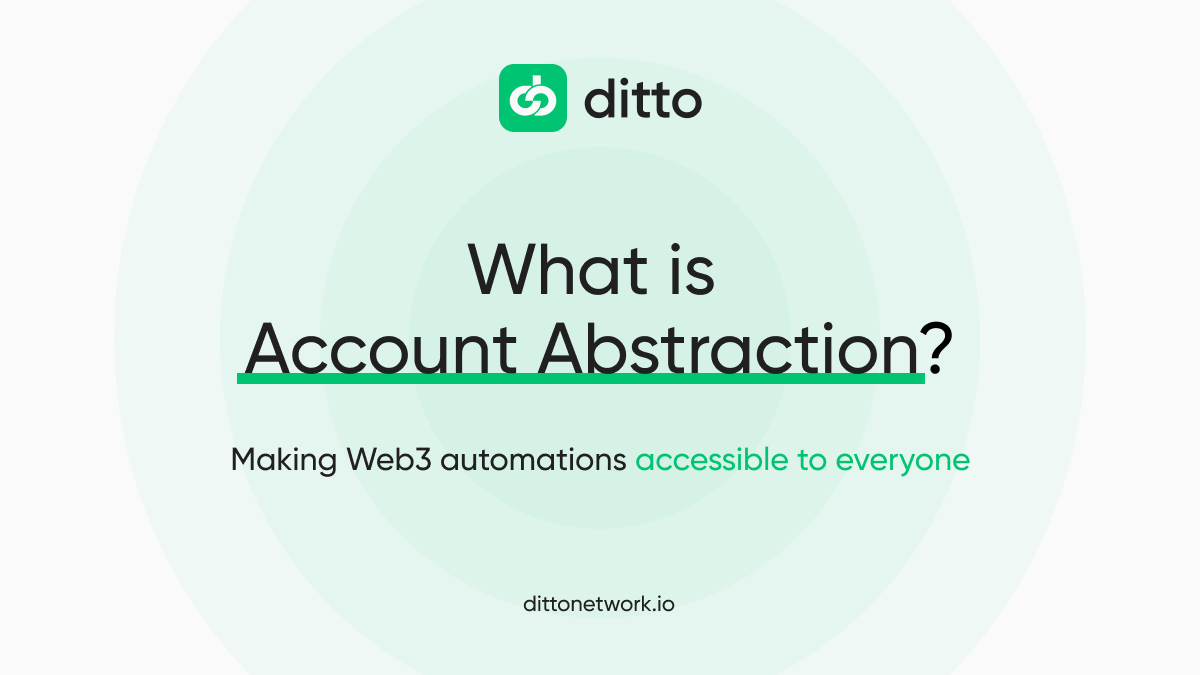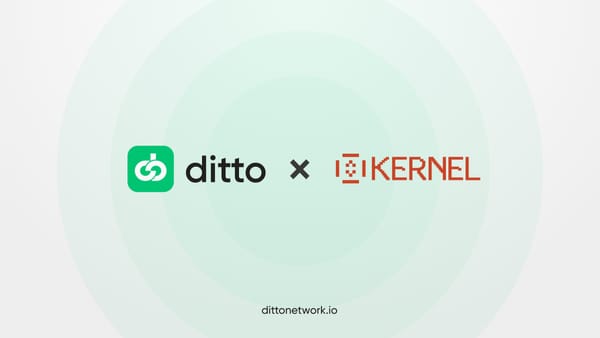Understanding Account Abstraction: Ditto Vault and Smart Contract Automation with EigenLayer Integration

Account abstraction is a groundbreaking innovation in the blockchain space that simplifies how users interact with the Ethereum network, enabling smart contract automation for more efficient and user-friendly interactions. By leveraging EigenLayer integration, developers can build more scalable decentralized applications using shared security mechanisms.
In simple terms, account abstraction abstracts the complexity of blockchain transactions and wallets, allowing developers to design more intuitive and user-friendly applications. This shift is pivotal in making blockchain technology more accessible and scalable, paving the way for mass adoption.
ERC-4337 Explained: Account Abstraction is Redefining Ethereum Wallets
The ERC-4337 standard is a key element in the implementation of account abstraction. Introduced to enhance the Ethereum network, ERC-4337 enables the creation of smart contract wallets that function similarly to traditional EOAs but with added flexibility and security. This standard facilitates smart contract automation, allowing for the creation of 'account abstracted wallets' that can automate transactions, enable social recovery, and batch multiple transactions into one, supporting the growth of DeFi and dApps.
ERC-4337 is designed to operate without requiring any changes to the Ethereum consensus layer, making it a seamless upgrade. It empowers developers to build smart wallets with features like social recovery, multi-signature authentication, and more, all while maintaining the decentralized and secure nature of blockchain.
Learn how to use Smart Wallet and Ditto’s services with Ditto SDK
What Is a Smart Wallet in Web3?
A smart wallet, also known as a smart account, is a wallet controlled by a smart contract rather than a private key. These wallets, built on the ERC-4337 standard, support smart contract automation, enabling users to manage their assets more securely while building scalable decentralized applications.
Smart wallets enable users to manage their assets without needing to remember complex seed phrases or private keys. Instead, they rely on smart contracts to secure and recover wallet information. This makes them more flexible and powerful than traditional wallets, offering features like batch transactions, social recovery, and customizable security settings.
Smart wallets are a significant step forward in making Web3 more accessible to everyday users, as they remove many of the complexities and risks associated with traditional blockchain wallets.
Externally Owned Account (EOA Wallet) vs Account Abstraction
Externally Owned Accounts (EOAs) are the traditional type of Ethereum accounts controlled by private keys. These accounts are essential to the Ethereum ecosystem, as they initiate transactions and pay gas fees. However, EOAs have several limitations, including poor security, lack of customization, and the necessity of holding ETH to pay for transactions.
EOAs require manual transaction signing, which hinders automation for developers and adds to the complexity of building scalable dApps. This limitation has paved the way for innovative solutions like account abstraction, improving both the security and usability of the Ethereum validator ecosystem.
What is Ditto Vault (Smart Wallet)?
The Ditto Vault is a cutting-edge smart wallet designed to leverage the benefits of account abstraction. Built on the ERC-4337 standard, Ditto Vault provides users with a secure and flexible way to manage their digital assets, offering features far beyond those of traditional EOAs.
The Ditto Vault allows users to safely hold and exchange assets, including native currency, ERC-20 tokens, and NFTs. It supports advanced features such as MEV protection and multicall composition for optimized interactions with DeFi protocols. Users can also set up deferred and conditional executions, enabling smart contract automation and intent-centric task execution based on custom triggers. With EigenLayer integration, Ditto Vault allows users and AVS operators to manage automated tasks across networks securely and efficiently.
One of the standout features of Ditto Vault is its built-in integrations with popular protocols like Uniswap, Aave, and others, making it easier for users to interact with various DeFi services. Additionally, Ditto Vault supports cross-chain control, allowing users to send messages across different EVM chains and execute commands in a seamless, decentralized manner.
Conclusion
Account abstraction is a pivotal development in the blockchain world, offering a path to more secure, flexible, and user-friendly wallets. By leveraging standards like ERC-4337 and EigenLayer integration, smart wallets like Ditto Vault are not only setting new benchmarks for Web3 but are also facilitating the growth of DeFi and dApps. This approach to building scalable decentralized applications is key to achieving broader blockchain adoption.
Whether you are a developer, a crypto enthusiast, or a casual user, understanding the fundamentals of account abstraction and smart wallets is essential as we move towards a more decentralized and interconnected future.
About Ditto Network
Ditto Network is a trustless actively validated keeper network (AVS) that runs event-driven workflows, enabling automation for developers with economic guarantees of execution through shared security and EigenLayer integration. This approach allows for efficient AVS operator participation and plays a vital role in enhancing and leveraging the security of Ethereum validators.
The team is comprised of experienced web3 developers and professionals with backgrounds and previous exits in web3 from McKinsey, Uniswap, Nil Foundation, TrustWallet, NEAR, 3Commas, and PE/VC.




